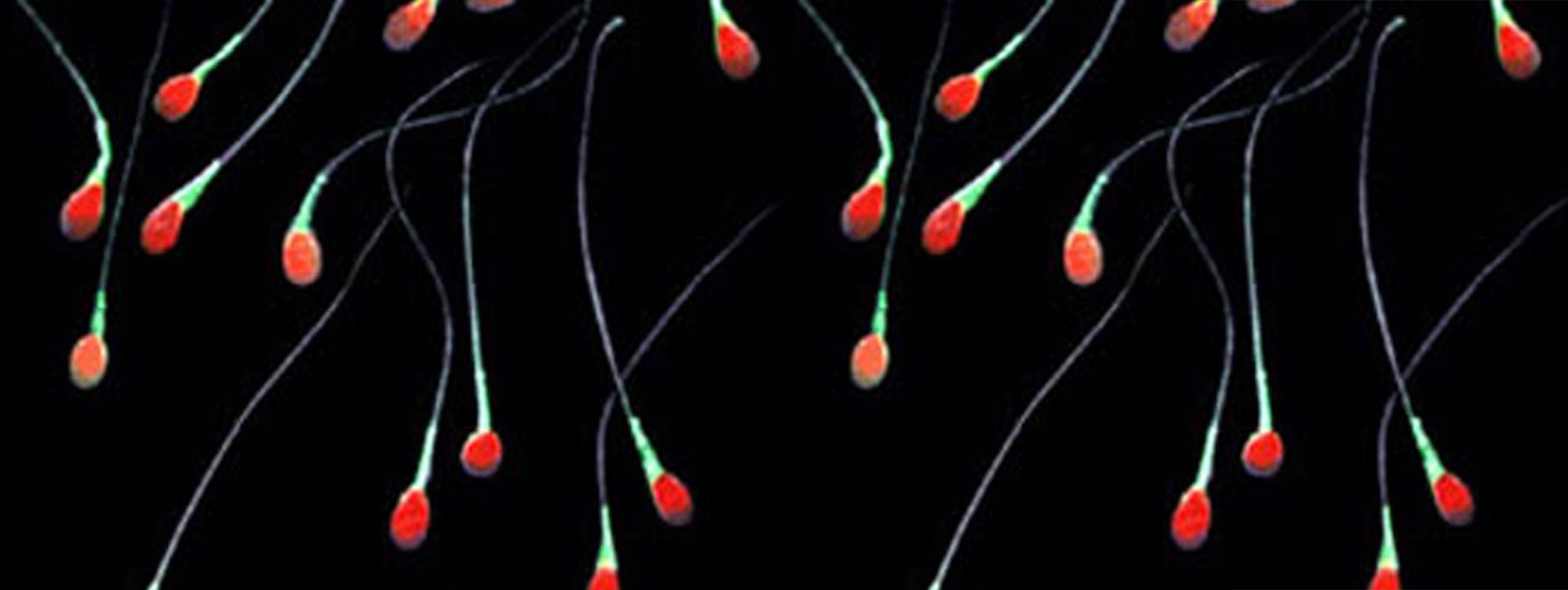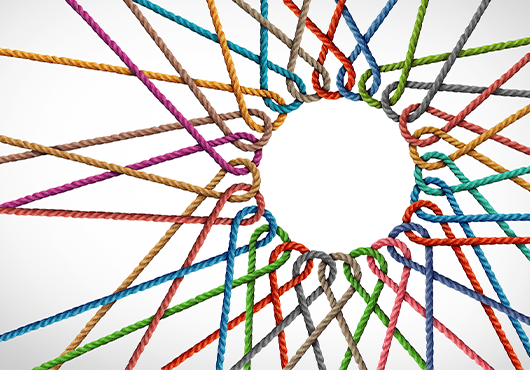
Abstract
Introduction: How do individuals who were conceived through the use of donor technologies feel about the nature of their conception?
Methods: A survey was sent to 148 individuals who were donor-conceived which asked questions about their demographics, psychological responses to finding out about their conception, and their thoughts about genetic testing and gamete donation.
Results: A total of 143 responses were collected. Approximately 94 percent were conceived anonymously and almost 85 percent reported a shift in their “sense of self” upon learning about the nature of their conception and about half sought psychological help in order to cope. Nearly 74 percent said that they often or very often think about the nature of their conception and 62.2 percent felt the exchange of money for donor gametes was wrong. Almost 43 percent believed that genetic testing companies ought to offer more complete information about using their products even though 90.2 percent believed being fully informed was impossible.
Discussion: Individuals experienced significant distress upon learning about the nature of their conception. Our findings suggest that great thought ought to go into a decision to test one’s own DNA and genetic testing companies ought to promote greater awareness about the potential harms of utilizing their products.
Introduction
With the advent of 23andMe and Ancestry.com, DNA testing is readily available for anyone who can afford it. In 2017 alone, more than 12 million people had their DNA analyzed from take-home kits, [1] and by the end of 2018 it was estimated that altogether 26 million individuals had taken an in-home DNA test. [1] Some individuals who test their DNA—whether at home or otherwise—discover that one (or both) of their parents are not their biological parents. Estimates of the numbers of individuals who discover that one of their parents is not a biological parent, or “not parent expected” (NPE), range from 4–12 percent. [2] The reasons for the discovery of NPE vary, but one of the central reasons remains that many of these individuals were not informed by their parents about the nature of their conception. Given the explosion in the number of individuals who are conceived through assisted reproductive technology (ART), it is not surprising that headlines such as “44 siblings and Counting” [3] and “One Sperm Donor, 150 Offspring” [4] are becoming increasingly common. It is not known how many donor-conceived individuals there are in the U.S because neither the U.S. federal government nor any states require tracking of this type of data, but given increased demand for use of ART by same sex couples and single women, we assume that the number of individuals who are conceived through donor technologies is only going to increase.
Though reactions to this discovery can vary dramatically, few studies document how individuals feel once they have learned that they were conceived via egg or sperm donation. Two surveys that do exist are “My Daddy’s Name is Donor” and “We Are Donor Conceived.” These surveys, as well as organic grassroots support groups, have emerged online as people have struggled to come to terms with their newfound information about the nature of their conception. Some peer-reviewed studies have also explored the perspectives of donor-conceived individuals. One study several years ago identified 13 studies of children and adults conceived mostly anonymously through sperm donation. [5] A 2017 article by Pennings reviewed five articles to investigate measurable psychological differences between donor-conceived individuals who were and were not informed about the nature of their conceptions. [6] More recently, a study conducted in the Netherlands investigated attitudes and perspectives of donor-conceived individuals of a range of ages. [7] Another recent study concludes the sixth phase of longitudinal study of 87 families through reproductive donation, focusing specifically on the psychological transition to adolescence for donor-conceived individuals. [8]
These surveys and studies are important, but there remains a dearth of data about how donor-conceived individuals feel about many of the issues—ethical and otherwise—surrounding their own conception, along with other considerations such as whether they have suffered psychologically because of the discovery of their conception, whether they have sought to identify and/or meet their biological parent, and how they have coped upon hearing the nature of their conception.
Given this paucity of information about the broad moral experience of those who were conceived by artificial means and their feelings about many of the ethical issues therein, we sought to survey individuals who were conceived through the use of donor technologies about a wide swath of these considerations.
Methods
Researchers created a survey for donor-conceived individuals which asked a wide variety of questions about demographic data, age at discovery of the nature of their own conception, psychological responses to finding out this information, thoughts about ethical and moral issues around genetic testing as well as gamete donation, and other related matters.
Researchers then asked Dani Shapiro, the author of a popular memoir about her own realization that she was donor-conceived, if she would inform others about the existence of the survey through her social media platforms and share an email address that was unique to this study, asking those who are donor-conceived to send an email to that address if they wished to participate in the survey
Everyone who wrote to this email address was sent an email that informed them about the nature of the survey and contained a link to the survey questionnaire. The email informed individuals that if they wanted to participate they could open the link in order to access the online Google survey and that, even if they started the survey, they were free to stop at any time. Survey questions included narrative responses, yes/no questions, and Likert scale questions. No identifiers connecting individuals to their survey responses were collected or stored in order to ensure and protect the anonymity of participants’ responses.
Emails were sent to a total of 148 individuals. Data were collected over a period of four weeks. Raw percentages of answer choices to individual questions were tabulated automatically by Google Survey and visualized as pie charts. To analyze the relationship between responses to different questions, chi-squared tests, and two sample t-tests were applied to pairs of questions and visualized using R. [9] Our institution’s Institutional Review Board granted this study an exemption.
Results
A total of 143 responses were collected from survey participants, representing a response rate of 96.6 percent. Survey respondents were diverse, from a variety of ages and educational backgrounds. Respondents tended to be older, given that 78.7 percent of respondents were aged 31 or older. Respondents were largely female (86.5 percent of respondents) and also highly educated. Forty-four percent of respondents had obtained a college degree and 39.7 percent had completed a graduate degree. A majority of respondents (90.8 percent) were raised in homes with heterosexual parents. Most respondents (86 percent) were from the United States, with a small group from other, generally English-speaking countries, such as Canada, the United Kingdom, or Australia.
Approximately 91 percent of our sample were conceived through anonymous sperm donation, 2.9 percent from anonymous egg donation, and in 80.9 percent of cases, the individual was not informed of the circumstances of their conception. Respondents learned about the nature of their conception at various points in their lives: 22.9 percent found out before age 18, 56.8 percent between ages 19 and 49, and 20.6 percent were over the age of 50 when they learned about the nature of their conception.
A large majority of our respondents (86.5 percent) believed that they have a right to non-identifying information about the donors; several also believed that they had a right to identifying information. Fifty-one percent of our sample were able to learn about the medical history of the donor, and 35 percent reported being at risk for medical conditions of the donor, including conditions such as dementia, heart disease, and diabetes. For some participants (23.1 percent), knowledge of the donor’s medical history led them to change the way that they live.
The news of someone’s donor-conceived status can be a transformative experience, as a large majority (84.6 percent) of respondents reported a shift in their “sense of self” once they learned about the nature of their conception. Many of our respondents sought psychological support after their discovery, either psychotherapy alone or with psychiatric medications (48.5 percent). When asked whether they believed that gamete donation is moral or immoral, 21 percent believed it was immoral, 15.4 percent believed it was moral, and 46.2 percent believed it was neither moral nor immoral. Approximately one quarter (25.9 percent) of respondents responded “No” when asked if “most people can be trusted in your life.”
A majority (69.2 percent) of our sample grew up with siblings and 37.1 percent of respondents said that their relationship with their siblings changed after learning about their own conception. Just over 74.8 percent said that they wished they knew more about their ethnic or national background. When asked how often they thought about the fact that they were donor-conceived, 73.8 percent answered “often” or “very often.”
Almost 70 percent of our sample said that society should not encourage people to donate eggs or sperm to individuals who want them. A little over half (62.2 percent) of respondents felt the exchange of money for the donor material beyond the cost of the procedure was wrong, while 29.4 percent believed it was not. (8.4 percent did not respond to the question.) With respect to their own conception, 50.3 percent of respondents were not troubled by the fact that money was exchanged around their conception, whereas 40.6 percent were troubled. For 8.1 percent, the exchange of money did not apply, they did not respond, or they did not know whether money was exchanged. When asked, “If you had a friend who wanted to use a sperm or egg donor to have a child, would you urge your friend to use an “open” donor, one whose identity is not concealed?” 86.0 percent replied “Yes.”
When asked if it is wrong to knowingly conceive a child who will be raised without a father, 58.7 percent replied “No,” which was approximately the same as those who thought it was wrong to knowingly conceive a child who will not be raised by a mother, with 56.6 percent responding “No.” And for those who did not know the identity of their biological parent, 63.6 percent responded that they would like to know more about their biological parent’s identity.
When asked whether genetic testing companies such as 23andMe ought to offer better or more complete information about what might result from using one of their test kits, 42.7 percent replied “Yes” while 48.3 percent replied “No.” Given how quickly technology is advancing, 90.2 percent of respondents believed it was impossible to be fully informed about the risks of DNA testing.
When responses to different questions were contrasted, the results were striking. Age was found to have a significant relationship to multiple issues, as younger people desired more complete information from companies such as 23andMe about the consequences of their test (p = 0.0278). Younger people were also more likely to find donation immoral (p = 0.01834). Those who felt that individuals do not have a right to have a biological child were also more likely to find sperm or egg donation immoral (p-value = 0.01171), as were those who believed that donors should not receive financial compensation beyond the cost of the procedure (p-value = 0.0000001518). Those who responded that sperm or egg donation was a more moral option compared to adoption were less likely to be troubled by the exchange of money for sperm or egg donation (p-value = 0.0000001518).
Significant relationships were also identified between people who sought mental health treatment and whether they reported feeling strong emotions when seeing the relationship between biological parents and their children (p-value = 0.00002597), as well as hearing other people talk about their genealogical background (p-value = 0.007103). Additionally, those who believed individuals should not receive compensation beyond the cost of the procedures were more likely to regard the exchange of money as troubling (p-value = 0.000000001352), while those who responded that donation was immoral were more likely to endorse adoption as a better option (p-value = 0.02652).
Discussion
Our findings carry multiple important implications, including numerous ethical considerations. The concerns that many respondents had about paying donors for their gametes raises a question about justice with respect to the use of these technologies, because if being able to conceive children is limited by a person’s financial resources, many might consider that unfair and unjust. Additional concerns about justice are expressed in our respondents’ feelings about adoption. Given that there are already so many children in need of homes, some would argue that the most just option for starting a family for couples that cannot or will not have biological children would be to adopt. Indeed, our results showed a relationship between those who believed that sperm or egg donation, in general, was immoral and those who believed adoption was a better option. Even though they themselves were conceived through donor technologies, we surmise that for these individuals the relative importance of biological ties within families is comparatively less important than creating a family with existing children in need of homes.
Our study also raises questions about informed consent. Over one quarter of respondents to our survey were over 51 years old, and when these individuals were conceived, scientists were decades away from the technology that would make tracing biological family lineages through DNA not only possible but also inexpensive and easy. Therefore, no matter how well intended, it would have been impossible to give donors or prospective parents truly informed consent about all of the parameters of conceiving babies through the use of donor gametes. Extrapolating into the future, we believe that it is impossible to know where technology will be in another 50 years and, as such, believe that there cannot be truly informed consent today for anyone involved, either the gamete donors or potential parents who utilize these reproductive technologies.
Despite our belief that full disclosure and truly informed consent around DNA testing or assisted reproductive technologies is not possible given current technologies, warnings about the possible consequences of DNA tests nonetheless ought to be as robust as possible with even more information about the multitude of risks associated with DNA testing, including discovering NPE or biological siblings about which one was unaware and the significant psychological distress that we saw in many of our respondents.
Our study of an adult sample size suggests that a significant number of individuals sought psychological or psychiatric support after their discovery. Given the frequency and extent of distress that we found among our respondents, increased care and attention ought to be given to the counseling that those who opt to test their DNA receive.
Additionally, when individuals are considering whether to go forward with conception through gamete donation, our data suggest that for the future well-being of all involved, anonymous donation ought to be discouraged. If individuals want to proceed with anonymous donation, at a minimum they ought to be counseled that informing the child about the nature of their conception at a very early age is best, in order to minimize the potential harm to the child if he or she were to discover the truth later in life. In our sample, those who learned about the nature of their conception later in life frequently had major disruptions to their identities and senses of self. Similarly, it is also in the best interest of the child to be informed about the health of the donor, since the donor’s medical history can affect the conceived individual’s health care choices. Our position is consistent with the Ethics Committee of the American Society for Reproductive Medicine’s recommendations, which advises parents of donor children to gradually apprise children of their status starting in childhood. [10] Despite this position, to our knowledge there are no support structures in place that could assist families in their disclosure efforts.
Debate continues among the research community concerning whether disclosure of donor-conceived status at an early age prevents psychological harm. An analysis by Pennings could not locate any clinically significant difference in psychological well-being between families that disclosed and families that did not disclose during childhood. [6] Golombok, however, points out that many of these studies are limited by their methodology and that additional studies have shown harm or distress falling upon those who discover their parentage later in life. [11] Our study suggests that Golombok may be closer to the truth, as our respondents reported significant disruptions in their personal identity, frequently thought about their own identity as a donor-conceived individual, and wondered about the identity of their biological parent. Additionally approximately half of our sample sought psychological help as a result of their discovery.
Our findings are in line with those of other studies of donor-conceived individuals. Other studies have been conducted exploring the attitudes of donor-conceived children and adolescents in households with a single mother [12] responses to the disclosure of the news that individuals were donor-conceived, [13] and beliefs about the relationship to the donor, the desire for more information about the donor, and views about donor conception in general. [5] These studies have generally found similar disruptions to personal identity for individuals who learn of the nature of their conception, and individuals in these other studies likewise experienced a range of emotions after learning about their donor-conceived status. [14]
Our study has several important limitations. First, the sample may not be representative, given that respondents were more likely to be older than 18, female, and holders of college or professional degrees. Additionally, our sample is not random. We advertised our survey through social media and asked interested parties to contact us through email, thus individuals who received email invitations were already motivated to take the survey. We do not know if those in online support groups—who seemed to comprise the bulk of our respondents—are similar to most individuals who are donor-conceived and thus representative of them or whether those who belong to such online groups might represent only a subset of donor-conceived individuals. It is possible, for example, that those who join online support groups might have been more upset and troubled at the discovery of the nature of their conception compared to other donor-conceived individuals.
Furthermore, our study did not ask whether patients learned of their donor-conceived status from family members or from an over-the-counter DNA test. Depending on the avenue by which people learned about their donor-conceived status, there may radically different attitudes toward many of the topics this study explored, including beliefs about the morality of donation, disruptions of personal identity, seeking mental health treatment, and so forth.
Despite these limitations, we believe that our findings indicate that there is a significant amount of distress in many individuals who discover that they are donor-conceived and that the ethical issues surrounding donor conception are profound and to date only partially studied. More has been published about the psychological effects of those who are donor-conceived, but most of the studies to date have been smaller, studied specific populations, or were not carried out in a scientific manner. Our findings suggest that greater thought ought to go into a decision to test one’s own DNA and, moreover, that the full implications of doing so are, quite likely, impossible to know, given the rapidity of scientific advancement in this arena.
Authors’ roles: All authors assisted in the conception and design of this study as well as with acquiring data. Mr. North was primarily responsible for performing statistical analyses of our data. Ms. Ollada Lavery and Mr. Burke wrote the initial draft and all authors participated in revising future drafts.
Financial disclosures: We received no funding for this project, and none of the authors received any compensation for their participation in this research.
Conflict of Interest: None for any of the authors
Acknowledgements: The authors would like to thank Dani Shapiro for her assistance in creating the survey questionnaire as well as her help in publicizing and distributing the survey.
Authors Affiliations:
Rennie Burke1, Yvette Ollada Lavery*2, Gali Katznelson3, Joshua North4, J. Wesley Boyd**5,6
*Mr. Burke and Ms. Ollada Lavery are co-first authors
1. University of California Riverside School of Medicine, 900 University Avenue, Riverside, CA 92521, rmorganburke@gmail.com
2. Clinical Ethics Committee at UC Irvine Medical Center, 101 The City Drive South, Orange, CA 92868, YO@Tionchar.com
3. Schulich School of Medicine and Dentistry, Western University London ON, N6A 5C1, Canada, gali.katznelson@gmail.com
4. Department of Statistics, University of Missouri, 146 Middlebush Hall, Columbia, MO, 65211-6100. joshuanorth@mail.missouri.edu
5. Department of Psychiatry, Cambridge Health Alliance/Harvard Medical School, 1493 Cambridge Street, Cambridge, MA 02139, jwboyd@cha.harvard.edu
6. Center for Bioethics, Harvard Medical School, 641 Huntington Avenue, Boston, MA 02210
**Correspondence Email: J. Wesley Boyd at jwboyd@cha.harvard.edu
Reference List
[1] Regalado, Antonio. "2017 was the year consumer DNA testing blew up." MIT Technology Review (Cambridge, MA) February 12, 2018. https://www.technologyreview.com/s/610233/2017-was-the-year-consumer-dna-testing-blew-up/.
Blyth, Eric, Marilyn Crawshaw, Lucy Frith, and Caroline Jones. "Donor-conceived People's Views and Experiences of their Genetic Origins: A Critical Analysis of the Research Evidence." Journal of Law and Medicine 19, no. 4) (2012): 769.
[2] International Society of Genetic Genealogy Wiki. Non-paternity event. International Society of Genetic Genealogy Wiki (2019). https://isogg.org/wiki/Non-paternity_event.
[3] Cha, Ariana Eunjung. "44 Siblings and Counting." Washington Post (Washington, D.C.) September 28, 2018. https://www.washingtonpost.com/graphics/2018/health/44-donor-siblings-and-counting/.
[4] Mroz, Jacqueline. "One Sperm Donor, 150 Offsping." New York Times (New York, NY) September 5, 2011. https://www.nytimes.com/2011/09/06/health/06donor.html.
[5] Blyth, Eric, Marilyn Crawshaw, Lucy Frith, and Caroline Jones. "Donor-conceived People's Views and Experiences of their Genetic Origins: A Critical Analysis of the Research Evidence." Journal of Law and Medicine 19, no. 4) (2012): 769.
[6] Pennings, Guido. "Disclosure of donor conception, age of disclosure and the well-being of donor offspring". Human Reproduction 32, no. 5 (2017): 969-973. https://doi.org/10.1093/humrep/dex056.
Hewitt, Geraldine. "Missing links: identity issues of donor conceived people." Journal of Fertility Counselling 9, no. 3 (2002): 14-19.
[7] Schrijvers, Anne, Henny Bos, Floor van Rooij, Trudie Gerrits, Fulco van der Veen, Monique Mochtar, and Marja Visser. "Being a donor-child: wishes for parental support, peer support and counseling." Journal of Psychosomatic Obstetrics & Gynecology 40,no. 1 (2019): 29-37. https://doi.org/10.1080/0167482X.2017.1396313.
[8] Golombok, Susan, Elena Ilioi, Lucy Blake, Gabriela Roman, and Vasanti Jadva. "A longitudinal study of families formed through reproductive donation: Parent-adolescent relationships and adolescent adjustment at age 14." Developmental Psychology 53, no. 10 (2017): 1966. https://doi.org/10.1037/dev0000372.
[9] R Core Team. R: A language and environment for statistical computing. The R Foundation for Statistical Computing (Vienna, Austria: 2020). https://www.R-project.org/.
[10] Ethics Committee of the American Society for Reproductive Medicine. "Informing offspring of their conception by gamete or embryo donation: an Ethics Committee opinion." Fertility and Sterility 109, no. 4 (2018): 601-605. https://doi.org/10.1016/j.fertnstert.2018.01.001.
[11] Golombok, Susan. "Disclosure and donor-conceived children." Human Reproduction 32, no. 7 (2017): 1532-1536. https://doi.org/10.1093/humrep/dex104.
[12] Zadeh, Sophie, Catherine Jones, Tajindar Basi, and Susan Golombok. (2017). "Children's thoughts and feelings about their donor and security of attachment to their solo mothers in middle childhood." Human Reproduction 32,no. 4 (2017): 868-875. https://doi.org/10.1093/humrep/dex016.
[13] Persaud, Sherina, Tabitha Freeman, Vasanti Jadva, Jenna Slutsky, Wendy Kramer, Miriam Steele, Howard Steele, and Susan Golombok. "Adolescents Conceived through Donor Insemination in Mother‐Headed Families: A Qualitative Study of Motivations and Experiences of Contacting and Meeting Same‐donor Offspring." Children & Society 31, no. 1 (2017), 13-22. https://doi.org/10.1111/chso.12158.
[14] Hewitt, Geraldine. "Missing links: identity issues of donor conceived people." Journal of Fertility Counselling 9, no. 3 (2002): 14-19.


